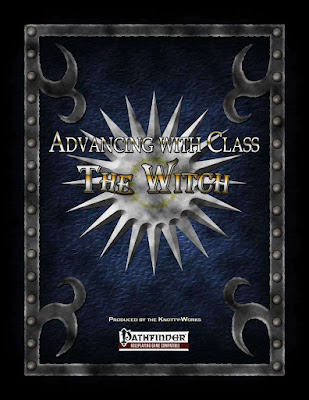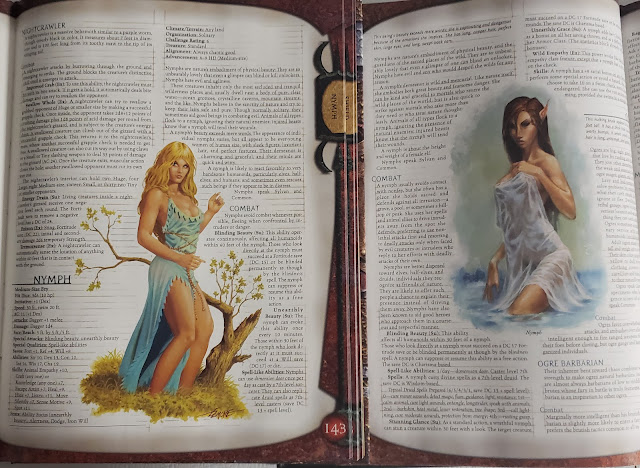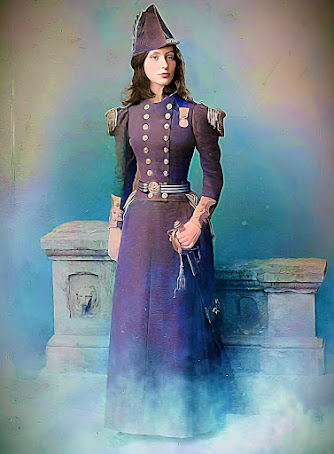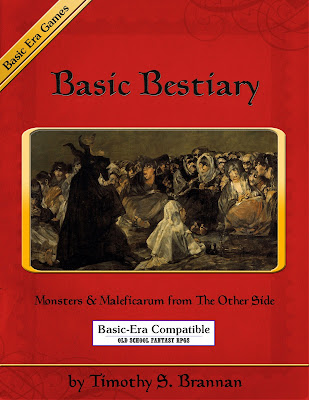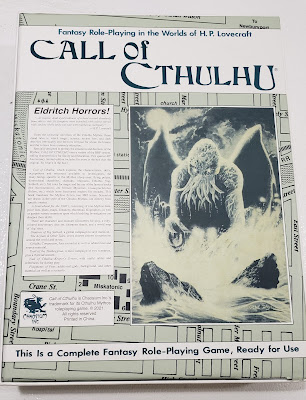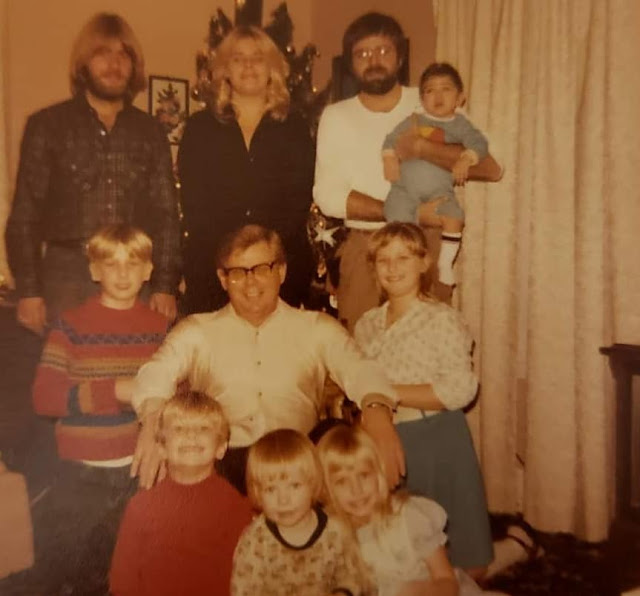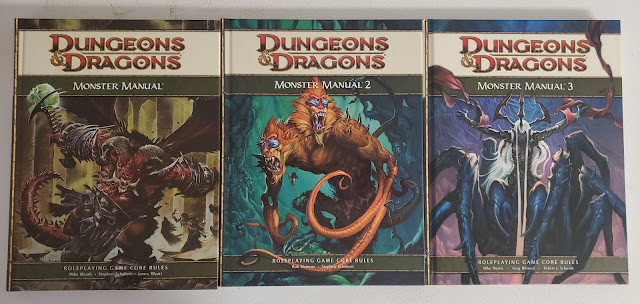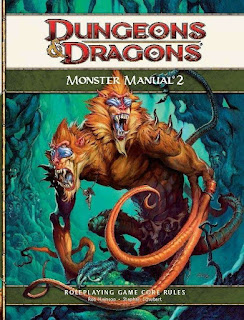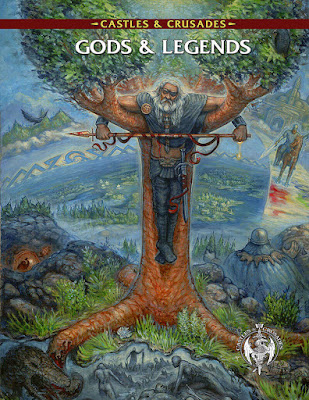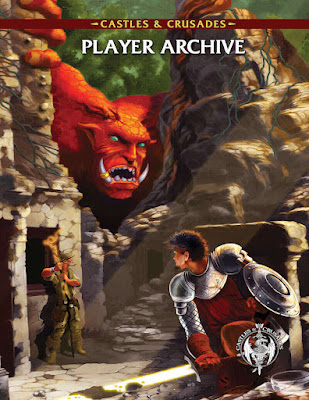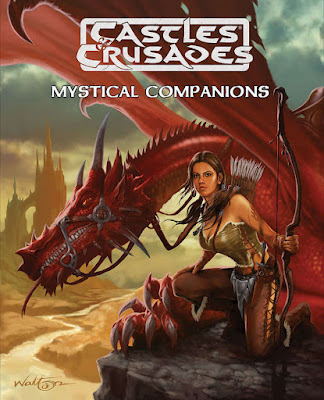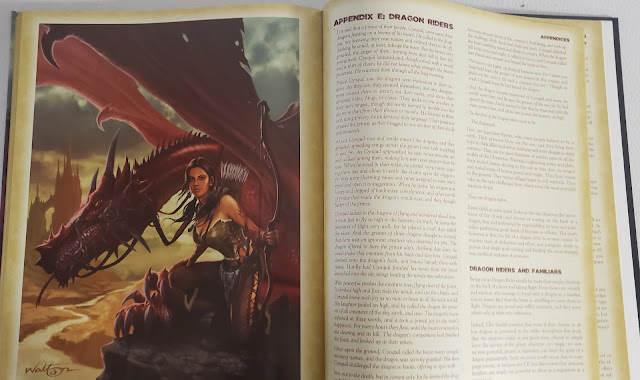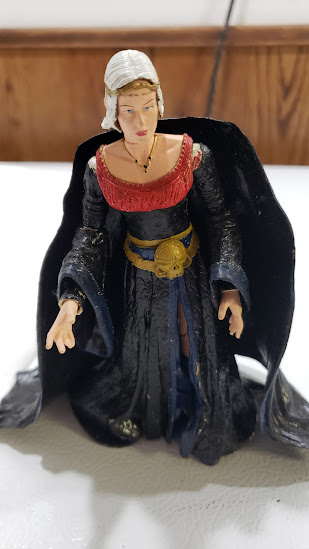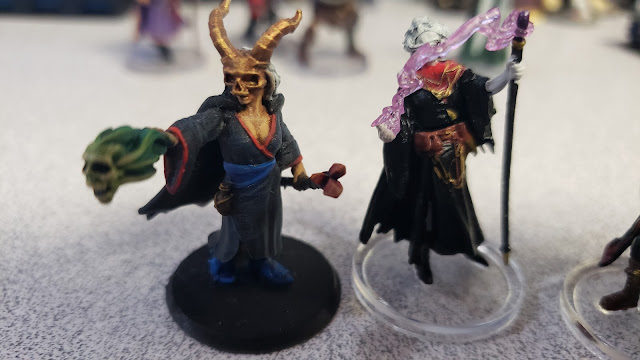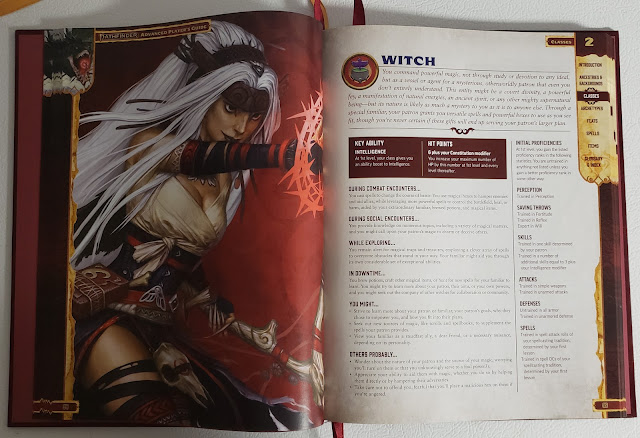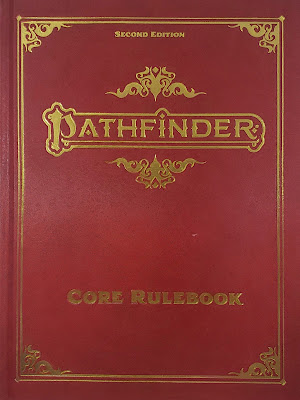
All month long I have been talking about, but more appropriately around, D&D. For the rest of this week I want to talk about D&D's, now adult, younger cousin. Pathfinder 2nd Edition.
This won't be a full review. The Pathfinder Core book is massive and absolutely packed. Plus there are plenty of reviews out there. Instead, I am going to look at some of the changes, updates, and innovations of the game and compare and contrast it to Pathfinder 1e, D&D4, and D&D5.
A bit of history first. Pathfinder 1st Edition was published by Paizo Publishing in 2009. It was an immediate success with the core book selling out at it's appearance at Gen Con. Don't quote me, but I think it was some sort of record. Since then Paizo has always had a huge presence at Gen Con. Paizo had been one of the 3rd party publishers of choice back in the 3.x days 2000-2008. It had a license to publish Dragon and Dungeon magazines and its support products for 3e were some of the best on the market. When Wizards of the Coast shifted direction and released D&D 4th Edition with no OGL backing, Paizo saw their opening. They released Pathfinder to a huge public beta testing and took in all sorts of feedback. The Core Rules, which combined what had normally been the Player's book and the Game Masters' book into one massive tome.
It is hard to appreciate just how successful Pathfinder was. When sales of D&D 4 spiked, but then dropped suddenly, Pathfinder took over the throne of best-selling fantasy RPG from D&D. D&D didn't just sit on that throne, they built it, often from the bones of vanquished enemies like DragonQuest. So successful that many people began to call it D&D 3.75 and even the rightful progression of D&D 3.x.
Pathfinder was a success and really would have been a success even without D&D4 underperforming (make no mistake D&D 4 still sold better than pretty much everything else combined).
Fast Forward to 2012-13. Wizards announce they are holding public playtests for what they are calling D&D Next. The playtests are similar to Pathfinder's. In 2014 D&D 5e is released to critical and commercial acclaim. D&D retakes its throne and stays there. Meanwhile by 2014 Pathfinder is moving along with a 14-year-old system (the 3.0 OGC). It survived the d20 boom and glut and still is the game of choice for many. But sales are low and the true money maker of any RPG are the core books. So in 2018 Pathfinder releases their 2nd Edition Playtest book.

It does not go over as well as the first playtest, this is the third time the market has seen this from the Big 2, but it is enough that Paizo releases Pathfinder 2nd Edition at Gen Con 2019. That brings me to today, Pathfinder 2nd Ed in 2022.
Pathfinder Second Edition
Pathfinder 2nd Edition (PF2e here on) is the update to the best-selling, award-winning Pathfinder RPG. For this review/overview I am considering the Special Edition hardcover from my FLGS. The book is 640 pages with full-color art.
Let's just start from the top. This book is gorgeous. The art is what you have come to expect from Pathfinder and this one does not skimp on it.

There is an evolution here that is very interesting. It is something I call my "Modula-2 Experience." Back in my undergrad days, I learned to program in Pascal. Not uncommon really, lots of people did that then. But later on I picked up other languages. I had already learned BASIC and Fortran so I picked up C and Modula-2. C is very different than Pascal so keeping the syntax straight was an issue at first but then became easier. Modula-2 is almost identical to Pascal with some odd bits here and there. Picking up the syntax was a lot easier, but became harder to keep them separate as I went on.
Pathfinder follows the Modula-2 path from D&D's Pascal. To extend the metaphor more, D&D 3 is Pascal, Pathfinder 1 is Modula-2, D&D 5 is Object Pascal/Delphi and Pathfinder 2e is Oberon. To extend my metaphor to breaking Original D&D is ALGOL.
Exploring PF2e is fascinating. There is a game here that I easily recognize and yet looks new at the same time. All of the same abilities are here, many of the same races (now called "Ancestries & Backgrounds), and classes. In fact, the first 240 or so pages read like D&D 3 or 5 or Pathfinder. It's when you delve into the details that differences become apparent.
1 Introduction
This chapter introduces us to RPGs in general and the Pathfinder 2nd Edition in particular. It (and the rest of the book) features the main text and sidebars to explain the text or put it into context. For example, the text on page 7 mentions dice and the sidebar shows a picture of dice with the standard die nomenclature.
This covers the basics of character creation such as deciding on your concept, rolling or assigning your six abilities (the classic six), figuring out your character details, and more. We have six ancestries and twelve character classes.
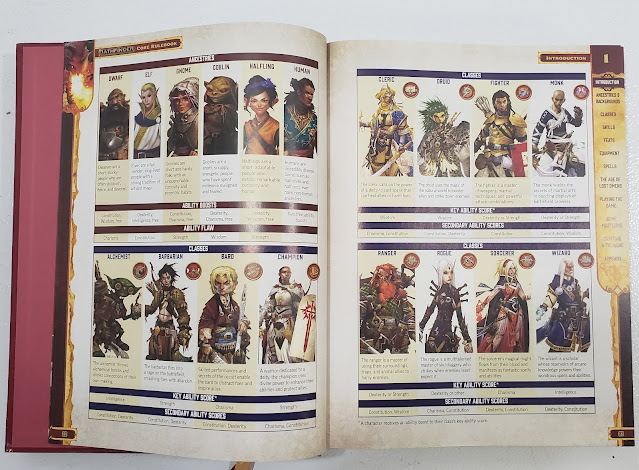
Now I will say this. While I appreciate a good character sheet breakdown, the PF2e sheet is ugly as hell. For all the great art in this book that is one garish sheet. Wow. I'll stick with the black & white one.
2 Ancestries & Backgrounds
Modern RPGs are moving away from the concept of "race" and instead are going with Ancestries. I rather like this approach, to be honest. While "race" might be a good term, there are enough negative connotations to it (see my discussions of 19th Century Race Theory) to make it less than desirable. Plus Ancestries and Background help parse out what you get via your parents (eyes, pointy ears, and more) and what you get growing up in a culture.
Ancestries are what older games call "race" it helps determine your ability score bonuses and sometimes penalty, your size, your speed, and what languages you might know. It also gives you "traits" and who well you see in the dark. Heritages are sub-specialties of the Ancestries. My favorite ancestry for PF2e right now is Goblin. Yes, you can play a Goblin in this game! The heritage I like the most is the Ironguy Goblin. You can eat anything. I love Pathfinder goblins.
Each ancestry gets an ancestry feat (PF2e is crazy with feats) at the first level. This helps define your character. For example, one feat is Goblin Song where you sing annoying goblin songs to distract your enemies. You can get additional ancestry feats at 5th, 9th, and 13th levels. Some have pre-requisites. So you can't take "Very, Very Sneaky" at 13th level unless you took "Very Sneaky" before.
An interesting note here. Half-elves and Half-orcs are not an Ancestry. You take Human as your ancestry and then half-elf or half-orc as your heritage. The rule implication here is clear. You can have mixed ancestry and heritage as the rules allow, you just need your GM to be ok with it.
Backgrounds are chosen like a feat but are akin to the Backgrounds of 5e. Akin, not the same. These usually give some sort of skill, skill boost, or feat.
Languages come from your Ancestry, heritage (sometimes) and background (sometimes).
Your HP at level 1 is based on your Ancestry and not your class. This is a good change since it can also apply to monsters and level-0 NPCs.
3 Classes
Here we get the classes we know from 3.x, more or less. There is the new Champion class, which replaces the Paladin (a Paladin is a type of Champion) and the new Alchemist.

Each class has an ability boost, HD for leveling up, saves, attacks, and what skills they have access to. They are constructed very similarly to D&D 3.x/PF1e classes. Each class also has a series of feats they can take at various levels. These include Class Feats (specific to class) and General Feats (used by all). You take a Class Feat at 2nd level and every even level after. General feats are taken at 3rd level and every four levels after. There are also skill increases, ability boosts and other powers/abilities so that there is something happening at every level for all classes. There are also sample variations on each class; these are done with the choices you make in powers, skills, and feats. For example a Paladin is a Lawful Good Champion and Dancer is a Bard that takes ranks in Acrobatics and Perform (among others). So customization is through the roof and no two characters of the same class need to look or feel the same.
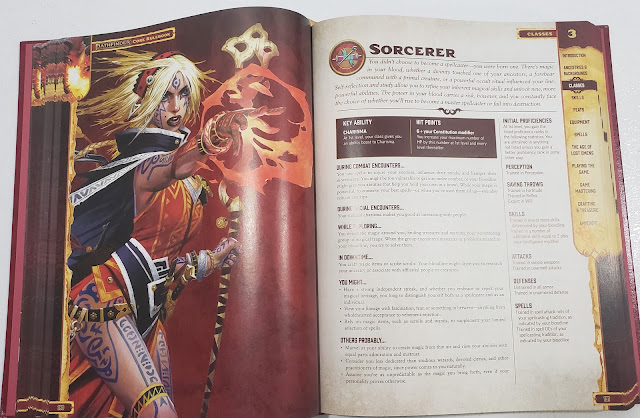
To add to this there are even Archetypes to define your character or at 2nd level you can take a multiclass feat to add some abilities of another class to your current one. Much like D&D 4e used to do. There is just so much to do with these classes. No surprise then that classes take up almost a quarter to a third of this book.
I do miss the Prestige Classes from 3.x/PF1e though. Though with this level of customization they can be "thematically" folded into the existing rules here with no issues. Want to be an Arcane Archer? I am sure there is a good skill/feat options that allow you to do that.
4 Skills
There are 17 skills for PF2e. They are well described and include things you can do untrained and things you can do trained. There are also specific examples of things you can do with each skill and whether or not these are move actions, require concentration or other modifiers. For example, Climbing is a type of Athletics check and it is a Move action.
5 Feats
Pathfinder isn't Pathfinder without Feats. Love them or hate them they are baked into the system here more than D&D or PF1e. And there is a lot of them. Again though great for character customization, bad for GMs needing to keep track of everything.
6 Equipment
Covers the shopping list. But also has premade Class Kits you can buy which have all the basic gear a class is likely to take.
7 Spells
The next largest section (about 120 pages) is Spells. All the same, schools are here, but now magic is divided into Arcane (Wizards), Divine (Clerics), Occult (Bards), and Primal (Druids) Spells. So seeing a bit of PF1e's later material and D&D4e DNA here. There are Spell Slots from 0 to 10 (yes 10th-level spell slots) and spells of level 0 (Cantrips) to 9. So you can heighten a spell to higher slots or sometimes a spell might need a higher slot depending on a feat. Similar to 3.x certainly but also a little feel of 5e's spell slot system. So for example there is no Monster Summoning I to IX. There is only Summon Animal (or Construct or Fiend or Fey etc.) and you can heighten the spell at higher spell slots. So taking Summon Animal at a 7th level Spell Slot lets you summon a level 9 or lower animal.
Spells are all listed alphabetically and tagged with various descriptors like "Cantrip," "Divination," or "Mental" and more. The description also lists what tradition(s) they belong too, Arcanes, Divine, Occult and/or Primal.
There are also "Focus" spells that are unique to a particular Class. Bards, Champions, Clerics, Druids, Monks, Sorcerers, and Wizards all get their own lists unique to them. Yes monks get "Ki" spells.
Like past versions, but mostly like D&D 4e there are also Rituals. these take longer and have certain requirements that need to be met.
8 Age of Lost Omens
This covers the very basics of Golarion, Pathfinder's game world. It includes a little history, the lands, and the gods.
9 Playing the Game
This is mostly the Game Master's section but there is still plenty here for players. Covers all the rules needed to play with an emphasis on the basic d20 roll and checks. Note there is no "Natural 20 = critical hit" here, BUT score 10 higher than their DC/AC then you do have a crit! So that is kinda cool.
10 Game Mastering
This is the Game Master's chapter. Lots of advice here on how to run PF2e games (and some of it applies to any d20-based game.) There is a lot here yes, but obviously more could be said since there is a Game Mastery guide out as well.
11 Crafting & Treasure
Modern gamers love to make things. I blame Minecraft. This chapter covers making things (great for the alchemists) and treasure. This is also a fairly large chapter.

We end with the Appendicies.
--
This book is huge and it is packed with information. The index is great and very useful. In fact, the entire design of the game allows ease of access to all information. This is one of the things that made 4e a well-designed game (not the same as "playable") and we see it live on in OSE as well.
Who Should Play Pathfinder Second Edition?
Anyone who loves to play D&D in its myriad forms and also loves deep character customization. In fact, if you love building characters and don't have a game going at the moment then Pathfinder has a lot to keep your character-building hobby very busy.
It is not a lite game. It is very, very crunchy. While the differences between PF1e vs D&D4 were very pronounced there is less obvious differences between PF2e and D&D5 at least in terms of the types of games you can play. I will say that if you were to play something like "Keep on the Borderlands" the differences in play between D&D5e and PF2e would be minimal and all resting on the mechanics of the game. Still, you are going to roll initiative, roll to attack an orc, roll a d20 to see if you hit, and then roll damage as indicated by your weapon type. At higher levels, these mechanical differences will become further apart, but essentially they both still have the same DNA linking them back to D&D 3 and before.
There is a lot to like about this game. There is a lot of game here too and that might not be to everyone's taste.
I can something like the Ancestries, Heritages, and Backgrounds making their way to D&D proper. It is so useful and gives so much more customization that looking back it seems like a no-brainer.
 2022 Pagan Witch Bundle
2022 Pagan Witch Bundle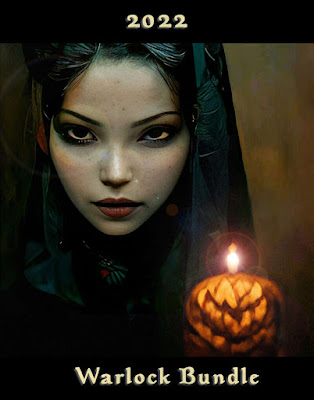 2022 Warlock Bundle
2022 Warlock Bundle
